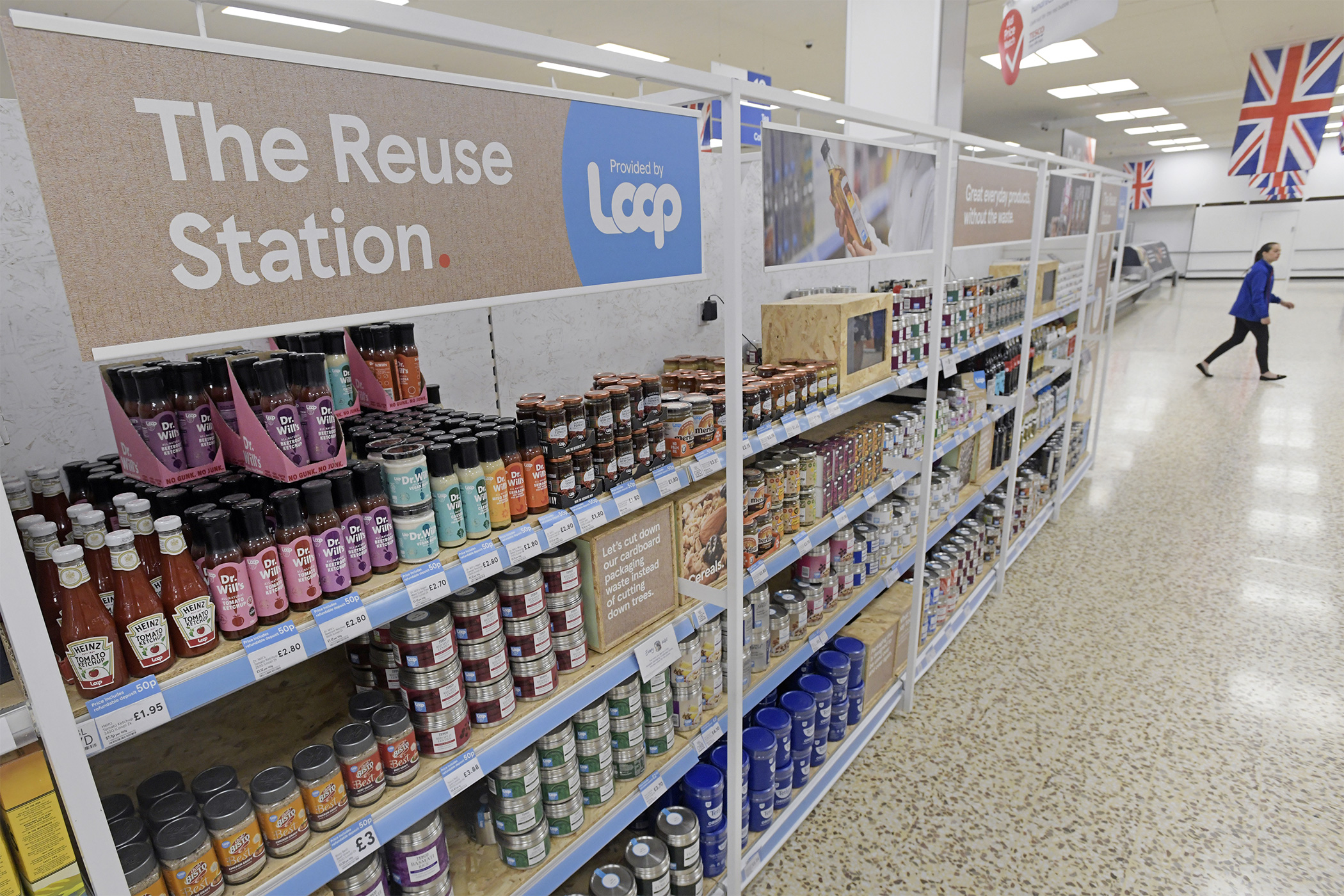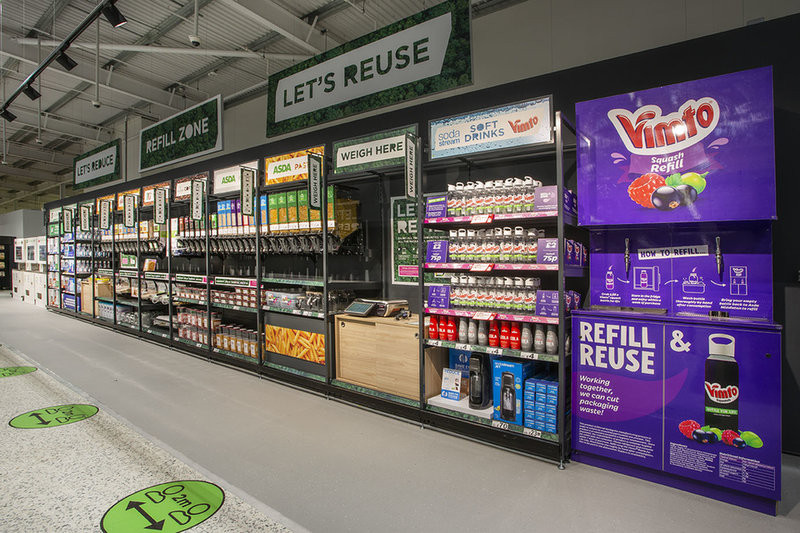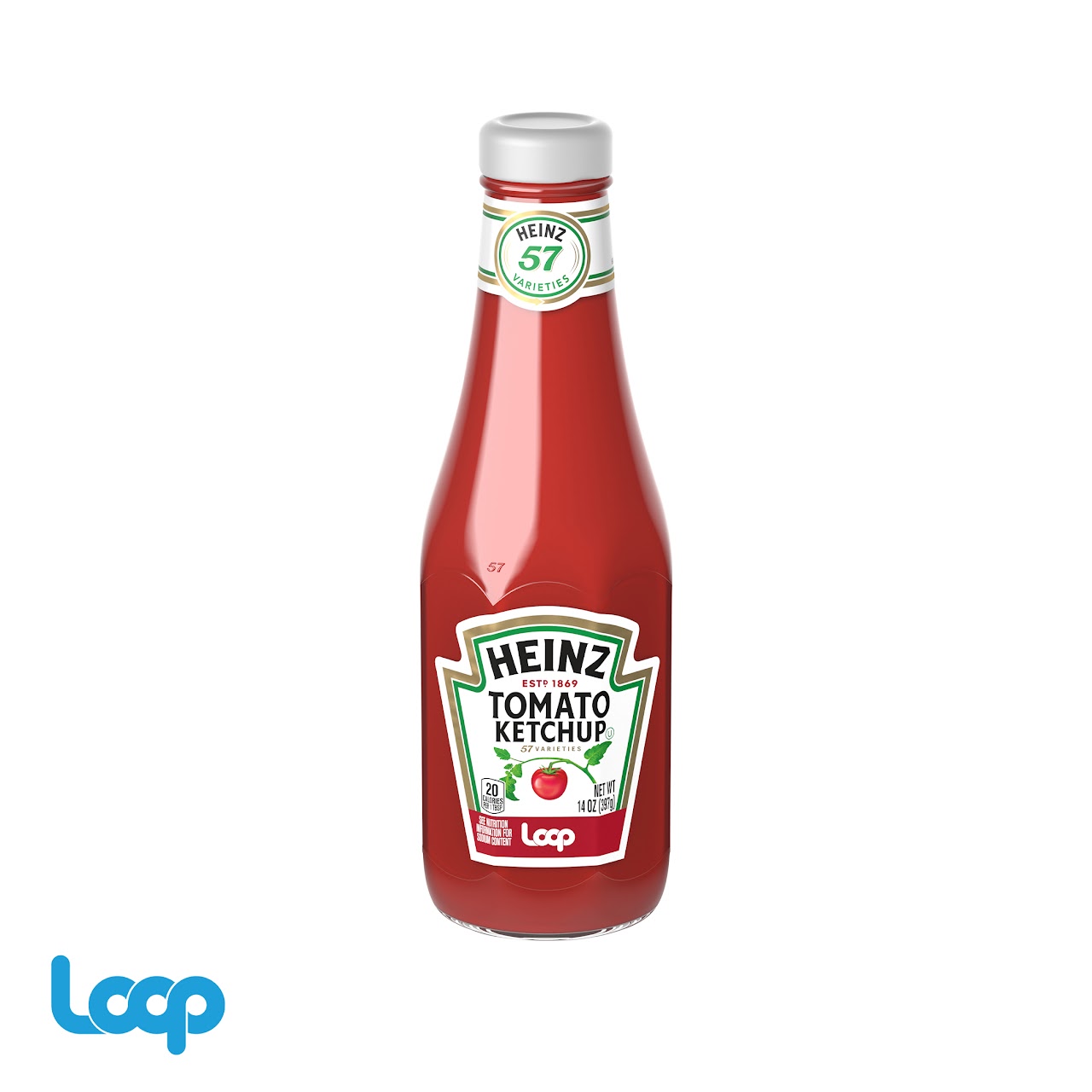
Reusables
Reusable packaging – a revolution stuck in a rut
Amid the investment being ploughed into single-use packaging, how much attention are food companies paying to reusable alternatives? And do consumers care?
T
he food industry’s record on rolling out reusable packaging is dismal. In 2020, just 0.6% of the plastic packaging used by brands signed up the Ellen MacArthur Foundation (EMF) global plastic commitment was reusable.
“In the past five years we’ve seen a lot of trials from big [consumer packaged goods] brands but none of them reach scale,” explains Mathilde della Fontana, research associate at sustainability advisors Lux Research. They are faced with “too many uncertainties”, she adds, leaving reuse stuck in a rut.
Four key issues
Speak to brands and experts and unpick the feedback from trials (of which there are, encouragingly, many) and four key issues emerge: carbon, cost, convenience (for consumers and companies) and collaboration.
The first, carbon, should be a non-starter. The odd, obtuse life cycle assessment (LCA), funded by an organisation with a vested interest in maintaining the status quo, that shows single-use ‘winning’ over reuse simply distracts from what most of the science is saying: after reducing packaging, reuse is the most environmentally sustainable option.
As ever, there are nuances in this but even the biggest brands understand reuse has to replace single-use in order to meet net-zero and circular economy ambitions.
“If done correctly, reusable packaging is better than recycling because it does not continuously need materials and so reduces the amount of materials used for packaging,” noted Tesco last month in a paper detailing the learnings from its year-long reusable packaging trial with Loop. The UK retailer said reuse requires significantly less energy, for collecting and cleaning packaging, than would be needed to recycle the packaging. Demand could grow “more sharply” as the public develops a better awareness of the environmental benefits of reusable packaging.
Consumers have a rather muddled perception of the environmental impacts of packaging, though. Tesco’s survey showed its customers often view reusable packaging as “equal” in environmental impact to recyclable packaging. Research published in the journal Resources, Conservation and Recycling in June suggests consumers need help. “[…] if neither theorists, nor companies, nor government agree on the sustainability of different types of packaging – how are consumers supposed to make correct assessments?” the researchers in Germany wrote.
Carbon cons
There is a considerable carbon communication job to do, it seems, but are companies motivated? From the voluntary packaging commitments many have made, it’s hard to tell. The likes of Mars, PepsiCo, Danone and Nestlé have all committed to ensuring their plastic packaging is “100% reusable, recyclable or compostable by 2025” but this has allowed them to talk about a ‘circular economy’ while implementing a ‘recycling economy’, noted experts from the Martin-Luther-University Halle-Wittenberg in Germany in an analysis of ten major FMCG companies. “[…] stricter targets for reduction and reuse in the strict sense of the waste hierarchy need to be formulated”, they concluded in their paper for the Journal of Cleaner Production.
The EMF commitment some brands have made doesn’t have a reusable packaging target for brands to meet. Reusable, recyclable and compostable are bundled together, suggesting they are on par environmentally. Such a goal also allows brands to obfuscate their progress because they are free to choose which option to go for rather than prioritise the one with the highest environmental benefit.
“Our priority is first and foremost to reduce the packaging we don’t need,” says a spokesperson for Mars. “We’ll redesign as much of our remaining packaging as we can to be reusable through product refill systems. Whatever we can’t eliminate or make reusable we’ll redesign to be recyclable or compostable.” However, 0% of the confectionery giant’s 179,000 tonnes of plastic packaging is currently reusable, and it has a lowly commitment to run ten reusable packaging projects by 2025 (there were two at the last count, in 2020, including one in France involving its Ben’s Original and Ebly brands). “We recognise we have a long way to go,” the spokesperson adds.
It isn’t alone. Just Food has looked at the reuse records of food companies in the top 20 largest FMCG companies being tracked by EMF, and the latest data clearly shows they are picking the low hanging fruit of recyclable over reusable. And yet brands have been praised for their work in this space, which angers campaigners.
The table shows Danone has the highest percentage of reusable packaging (4.8%), with Nestlé (1%) and FrieslandCampina (0.4%) the only other companies to have registered any reusable packaging.
Outside of these there are another eight food companies signed up to the commitment – Clif, Driscoll’s, Ferrara, Ferrero, McCain Foods, McCormick & Co., Sovena and Zespri – and all reported a reusable packaging rate of zero.
There are, of course, a number of brands not yet reporting their plastic packaging footprints in this detail. Transparency is key and in this case it reveals how reticent brands are to adopt reusable systems. “Although there is consumer appetite for reusable products, and we have seen positive responses from customers, we need to keep testing to find a model that is cost-effective and works at scale,” explains Youssef Chtourou, global circular economy director at Danone.
Cost conundrum
Cost is pitched as a barrier in the adoption of reuse and refill systems. Reuse has long been seen as a “niche and more expensive option”, according to Wrap, a UK charity which leads the country’s Plastics Pact initiative. High charges for deposit-and-return schemes were certainly a criticism levied at the Loop trial with Tesco.
More work is needed to find the balance between incentivising adoption and ensuring returns. In the early days of Burger King’s reusable packaging trials, for example, a lot of people paid the GBP1 (US$1.13) deposit but not many brought the packaging back, explains the chain’s CFO Tim Doubleday. Technology will likely play a role, allowing better tracking and a more seamless return system (Unilever says a new app allowing customers in Chile to top up cleaning products allows it to analyse progress and “make adjustments quickly”).
Some companies have made considerable efforts to convince customers they won’t be out of pocket. Asda, the UK grocer, has been offering more than 70 household staples including cereal, oats, rice and pasta in a refillable format for two years at its store in Leeds. Three more stores have also been added to the scheme. Products from brands including Kellogg, Quaker Oats and Napolina are all being sold at the same price or cheaper than packaged equivalents; shoppers also choosing refill as a means to buy only what they need, wrote Susan Thomas, the retailer’s senior director of sustainable commercial activities, says.

A refill station at an Asda store in Middleton, Leeds
Could the cost-of-living crisis be an opportunity to push reusables? For consumers, maybe, but brands – despite the US$10bn opportunity identified by EMF in moving 20% of single-use into reuse – will point to the higher operational costs. Tesco’s trial showed the cost of cleaning and prefilling reusable packaging “can sometimes cost more than the actual product inside”.
Relying on shoppers to pay more for reusable packaging would be folly – especially in the current climate. Surveys may point to their sustainable intentions but these can evaporate when actually faced with a packaging premium. The top motivator for using a reusable packaging scheme was being able to do so at no extra cost (41% of 3,000 UK consumers), according to research this year by global packaging firm Bunzl and charity Hubbub. Cost was the second most likely factor to put them off (31%). As Thomas at Asda notes, shoppers “quite reasonably expect to pay less for a packaging-free item”.
Disposable packaging has long been too cheap, but the tide is turning. Food brands are facing spiralling costs for all types of packaging. Plastic taxes, single-use plastic bans, and extended producer responsibility regulations will drive the prices higher still. Will this close the gap on reusables?
“Sometimes the gap is already closed,” says Laura Peano, global plastics lead at Quantis, a consultancy. Short distances within the ‘loop’ of stores and collection operations, efficient cleaning, standardised packaging, and high return rates can all help bring costs down.
“[…] what is clear to us is that if we are going to get these models working at scale, we need to work across the entire value chain to make reuse and refill as convenient and affordable as possible,” says a spokesperson from Unilever, which has launched over 40 reuse-and-refill pilots since 2018 to test different models. It’s not straightforward: companies have to consider shelf-life, contamination and food safety, logistics, actual reuse rates and consumer engagement.
Research by IGD in the UK shows 41% of consumers have already used reusable packaging. Refill at home appeals more than that in-store: 40% of consumers responded with a ‘fast yes’ when asked about their willingness to use the former. Convenience remains a “pain point” for reuse, says Chtourou at Danone, which has had far more success with reuse for its water portfolio (50% of worldwide sales come from reusable containers).
Category hotspots
This is a fundamentally different way of shopping. Some markets, sectors and consumer bases will be more suited to it than others – at least initially. Consumers in places like Germany and Sweden for example have long been exposed to reusable packaging systems and may buy into its expansion more readily. It may also present more environmental and economic benefits in smaller countries like the Netherlands, where the distances the packaging is travelling (which racks up carbon and costs) are shorter.
There is also a case for targeting certain categories first. IGD’s research shows consumers seem most open to buying fruit and veg (60%) and dry goods like cereal, pasta and rice (54%), in refillable packaging. Meat, poultry and fish (30%) and alcohol (24%) they appear less keen on. Some categories may well present a harder sell. Mars argues reuse “remains a challenge” for parts of its packaging portfolio because of the high proportion of impulse product’ it sells.
That may be the case but Amanda Curtis, sustainability specialist IGD, says it doesn’t matter whether it’s confectionery, fresh produce or even ready meals: companies are asking how to make reuse work. She is involved in a project that will produce a heat map of a supermarket showing where to target efforts to reduce packaging and shift from single-use to reuse. Companies are “really struggling” to make the systems commercially viable, she explains, but some of the schemes are hidden away in stores, with little ongoing promotional activity or staff available to help (which is proving to be a key factor in uptake). “How are you going to make money out of that?” Curtis wonders.
Look at the submissions companies have made to EMF each year and there are trials galore but these are spread thin and rarely last long enough. “They might pilot for a few months and then say ‘oh, it’s not working’,” says della Fontana at Lux. “Reusable packaging is something you need to implement over time.”

Scale and scalability
Walmart has just launched a year-long trial with Loop, TerraCycle’s reuse platform, in the US. Kraft Heinz is among the brands involved, and more will be added in the coming months. “[…] we see a unique opportunity to help our customers eliminate packaging and single-use plastic from many of their regular purchases,” explains Corey Bender, VP merchandising for household essentials at Walmart in the US. Circular economy specialist Paul Foulkes-Arellano from UK-based Circuthon Consulting hopes Loop has “learned lessons” from the trial with Tesco and other retailers. It’s positive but “does the [reuse] model need a serious overhaul and proper investment?”
One company alone cannot achieve reusable at scale
There is a nagging feeling companies are stalling to scale these systems. “For a prefill packaging proposition to succeed as a genuinely accessible and affordable option in the long-term, it will need scale,” says Tesco chief product officer Ashwin Prasad. It will also need to “become second nature for customers across many different retailers”.
That means collaboration and in Tesco’s paper there is an underlying tone others mightn’t be pulling their weight. The food manufacturers approached by Just Food offer similar defences for their dire performances to date. “One company alone cannot achieve reusable at scale,” says Chtourou at Danone. Mars notes it is investing “heavily” in reusables and “hundreds of millions of dollars to redesign more than 12,000 packaging components and formats to fit with the available recycling infrastructure”. NGOs feel the focus is once again on recycling rather than reuse. “Just like you cannot run trains on roads, you cannot run reuse in a system designed for single-use,” says Zero Waste Europe campaigner Larissa Copella.
The likes of Copella are hoping regulation could rouse a reaction on reuse. She and others are pressing for legally binding targets on reusable packaging as part of the upcoming revision of the EU’s packaging and packaging waste directive. The likes of Austria, Germany, Portugal and Sweden already have targets in place, but most lean towards beverages.
Look at the pressure points campaigners are targeting and there is a focus on drinks, food-to-go, household care and e-commerce sectors. These are the sectors considered “in route” to deliver on reuse and offer the biggest opportunities. Research by the Rethink Plastic Alliance last year showed scaling up reusable food-and-beverage containers in the foodservice and hospitality sector by 50% by 2030 could save 2.6MtCO2e and EUR10.4bn ($10.24bn), for example. Food-to-go is also being keenly targeted by regulators, through restrictions on an expanding range of single-use plastics and bans on disposables when people dine in.
Can food manufacturers and grocers rest easy? Not really. Some hoped Covid would have put the brakes on reuse as consumers became cautious about contamination but it didn’t (safety remains a concern but hasn’t stopped reuse trials in their tracks). Those thinking the cost-of-living crisis, supply chain crunch, inflation and net-zero may have seen campaigners and consumers go soft on plastic have also been sorely mistaken.
Single-use’s safe space
Reusables can help food businesses curb carbon, cut costs and keep customers happy. But all companies seem to see are challenges. They talk about higher costs, lack of collaboration and consumer confusion but these are convenient excuses that keep them in the safe space of systems that rely on single-use packaging. The next progress report from EMF is due next month and time is running out for brands to show they are really buying into reuse.